亞洲大學視覺傳達設計學系講師
Lecturer, Dep. of Visual Communication Design, Asia University
Article of famous designers

亞洲大學視覺傳達設計學系講師
Lecturer, Dep. of Visual Communication Design, Asia University
When encouraging students to participate in the international competition of art and design—as a part of Taiwan’s design education—Taiwan should distinguish itself. Our design education should not only be in line with international design trends but also provide a transparent and influential platform for students to gain recognition from the international community. Therefore, we must consider how to leverage the existing art and design training programs of the Ministry of Education of Taiwan to create a transparent and fair international design competition. The competition can also be used to expand the visibility of soft power of Taiwan. The “Taiwan International Student Design Competition” does just that. Organized autonomously in Taiwan, it is a non-profit international design competition. The competition encourages the participation of students from art and design schools around the world. International experts and scholars of design are invited to Taiwan to serve as judges and speakers. The competition brings a wave of creative talent to Taiwan and is a catalyst for innovative design on the island. The competition also adds value to the education and industry of design by cultivating distinguished designers and helping them to gain recognition from the international community. This has helped the international community to better understand Taiwan and the achievements of Taiwan’s design education.
The design competition aims to help those involved to broaden their horizons of thought while learning about recent breakthroughs and innovations. However, since the threshold for entry of the competition is low, the competition has become a means for the design industry to gain access to creative innovations at a low cost. Thus, the competition has become inundated with submissions of low-quality works, making the competition low-valued and short-life. Moreover, the winners of the competition are usually quite far from final commercialization or mass production, which is to say the competition’s award-winning works can’t necessarily be commercialized successfully. The purpose of participating in the design competition is more to gain access to a stage for one’s own ideas and works. Creative design as a channel for self-expression should not be limited by costly registration fees or participation fees. Non-profit design competitions should serve the greater good of design education. It should be fair while offering aspiring designers a platform to show off their talents and ideals. A prize can be used to encourage participants but isn’t necessary. A design competition that receives recognition can attract notable designers while affecting and contributing value to the design industry. Prizes are temporary, while the impact of the competition can be life-changing.
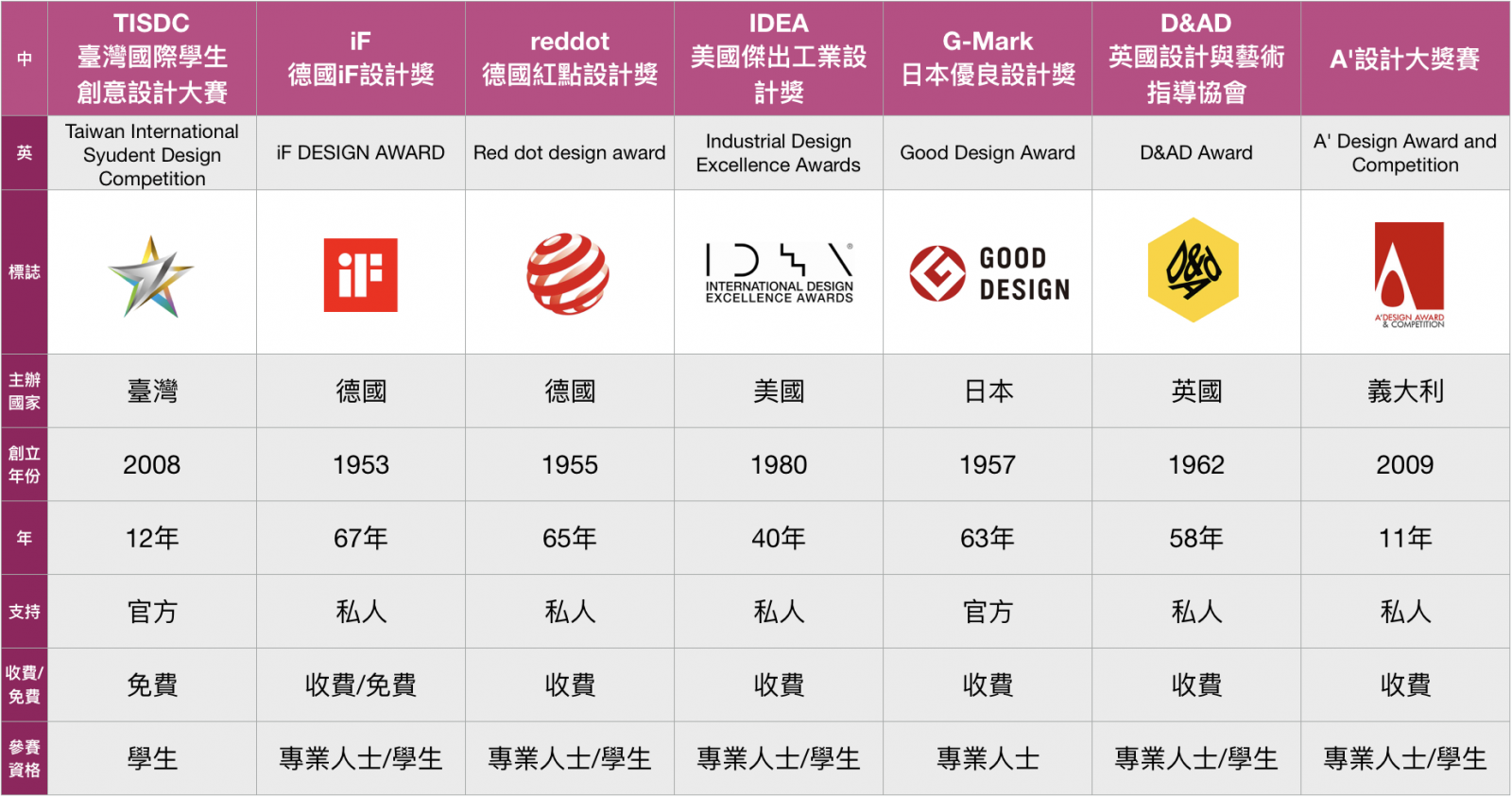
Therefore, the design competition needs to be changed. It should not be just a platform for acquiring low-level design at a low cost. A good international design competition should be beneficial to both parties. As the designers participate in the competition, they receive the input and feedback from the judges. This allows the designers to better understand their own ideas as well as their creative blind-spots. In this way, designers are able to grow and learn together. The design competition should also provide clear requirements so that designers can understand the goal of the competition. This will also help designers to design their creations according to the requirements and to avoid submitting works that are off-subject and detract from the original intentions for holding the competition—to foster growth and constructive competition.
How can a non-profit design competition be industrialized but not commercialized? The design competition should have an operational business model. However, the purpose of the competition is not to make a profit, but to expand its international influence. A non-profit design competition faces many restrictions, including funding, life cycles, influence, etc. A design competition must advance with the times. A design competition should not be solely focused on generating profits or innovation at a low cost. Rather, a design competition should focus on encouraging innovative design and thinking so as to allow designers to realize their value and significance. Therefore, since 2014 the Taiwan International Student Design Competition has invited international design organizations to cooperate so as to endorse the awards and the international team of design experts that serve as judges. In cooperation with these international design organizations, we will expand the influence of design competition, while helping participated countries to better understand Taiwan and allowing Taiwan’s design students to compete alongside students from around the world. We will hone the students’ competitive edge while helping them to gain international recognition and exposure. Non-profit design competitions should expand the influence of design education programs while spreading the value of new design concepts. In this way, a design competition can affect the design industry and establish itself as a platform for interdisciplinary and international design.
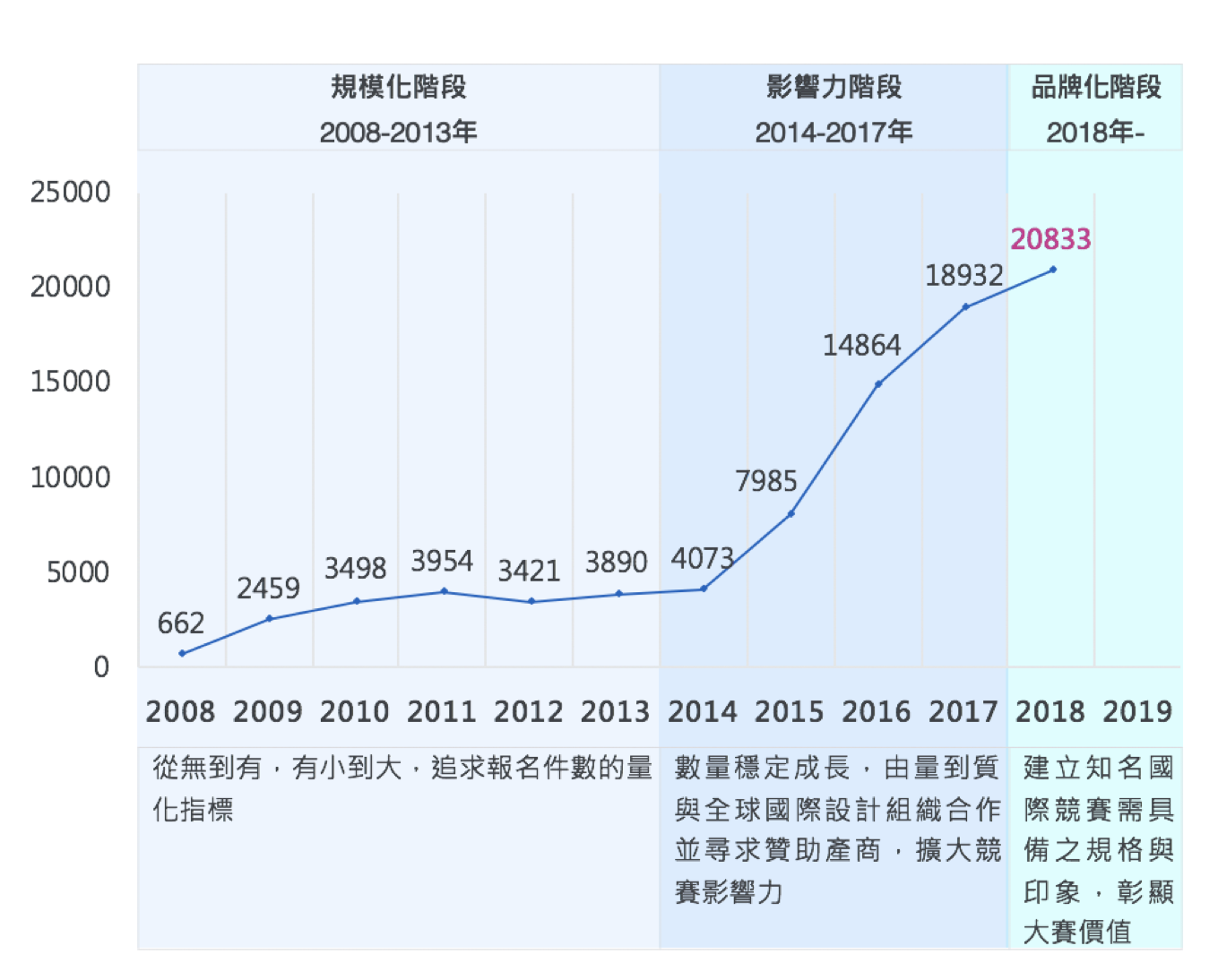
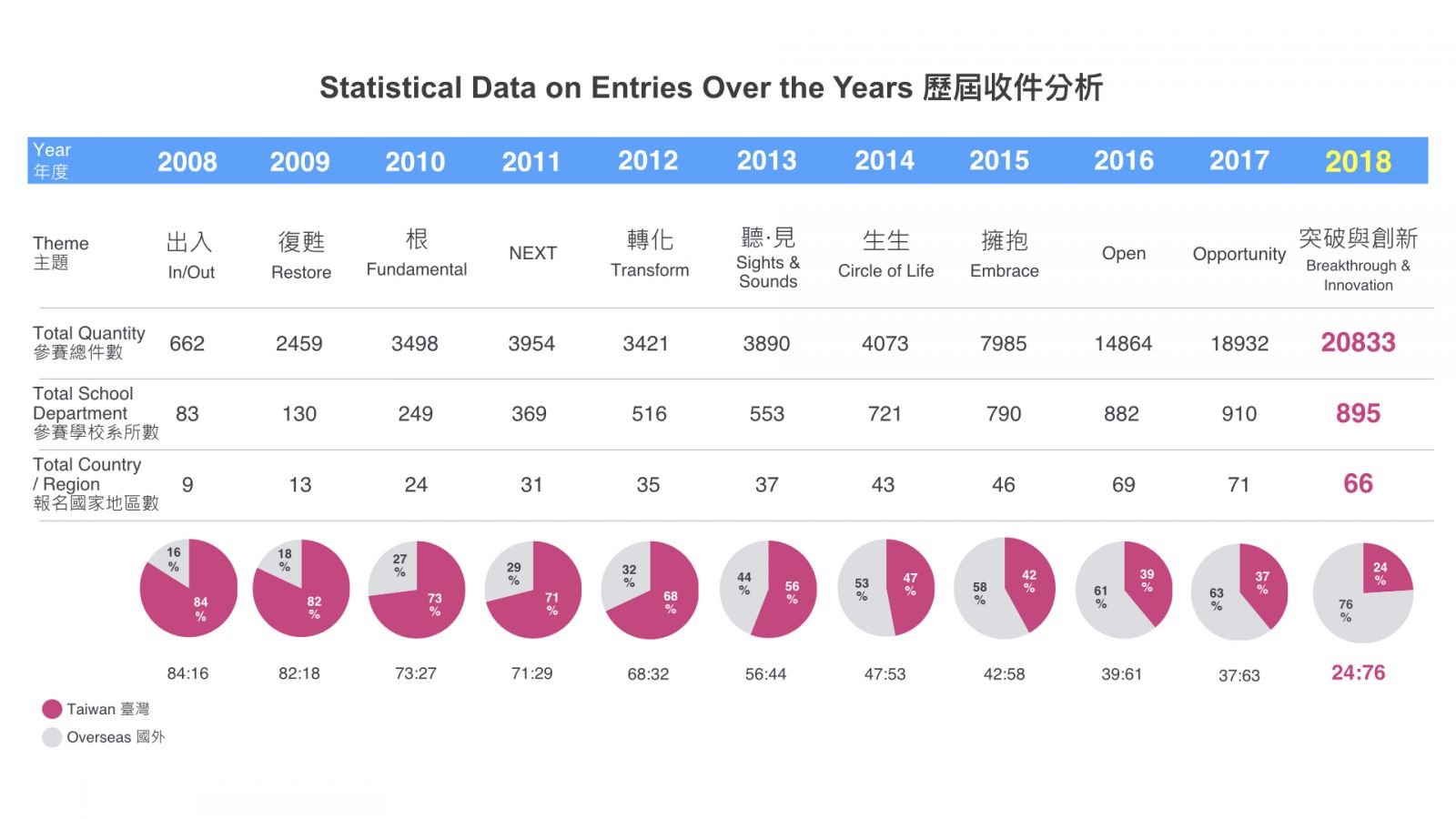
There should also be adjustments with regard to the implementation strategy, and the five strategies for the non-profit design competition:
1. implement design education promotion
2. expand the scale of the competition
3. integrate the external cooperation platform
4. strengthen cooperation with international design organizations
5. regional competition selection
6. social media operations.
From the most subtle places, we can exert the greatest influence. From point to line to surface, we should scale up and increase the influence of the design competition so as to build a network of design communities that will allow our design competition to reach greater audiences.
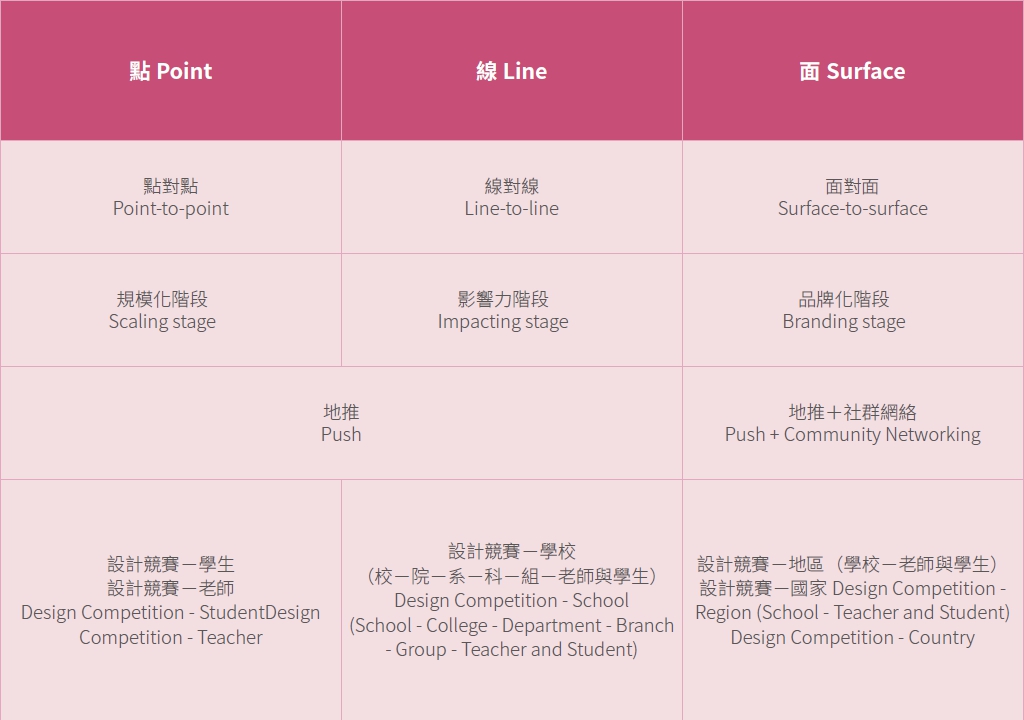
How to extend the life cycle of a design competition? Crowdfunding is a means of funding the competition with the capital support made available by internet users. Crowdfunding can be carried out by making publicity materials and designers’ works viewable on the internet and telling viewers that the works will be mass-produced if the funding goal is reached. This sort of strategic plan is a break from those used for previous design competitions, which focused on design as a set of concepts. This strategic plan allows the masses to decide whether a concept should be commercialized. Such strategic planning will break from the previous design competitions, which can’t move past the stage of conceptual design. The general public will decide whether the design works can be implemented and commercialized. In order to industrialize the design competition, aside from cooperating with international design organizations, we will also cooperate with manufacturing companies and establish work-study mechanisms that will be available to winners of the competition. In this way, the winners can use their talent to improve the industry of design.
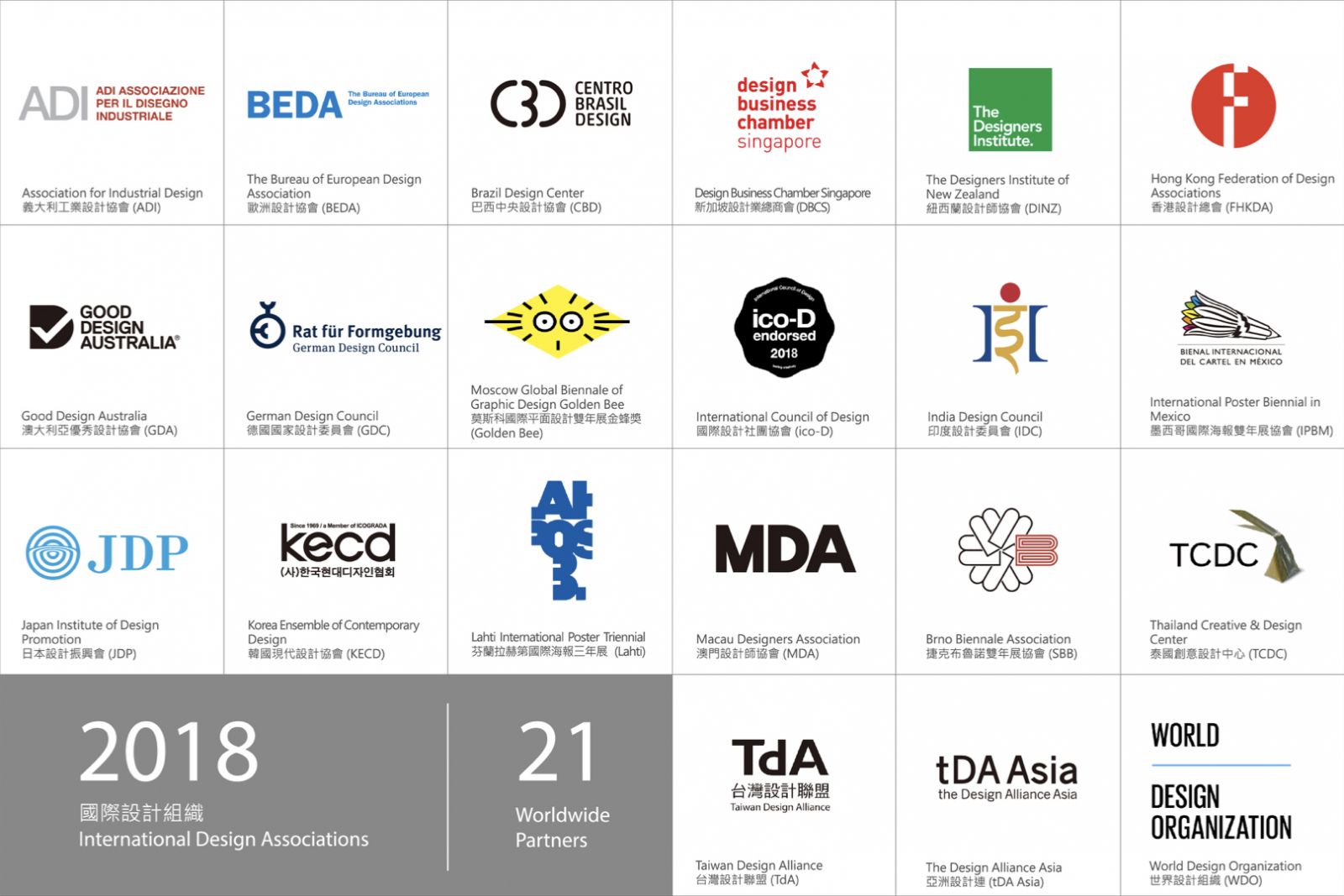
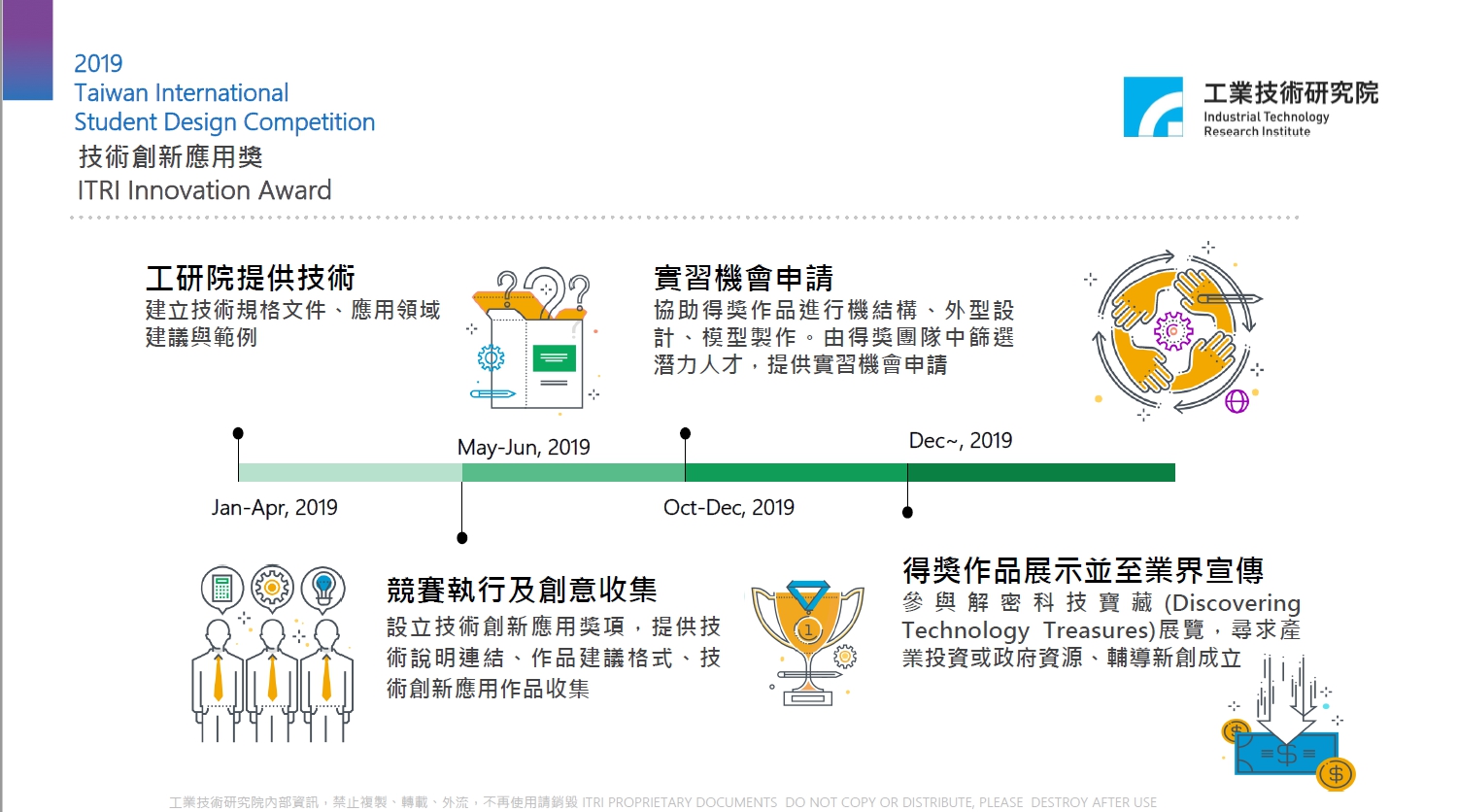

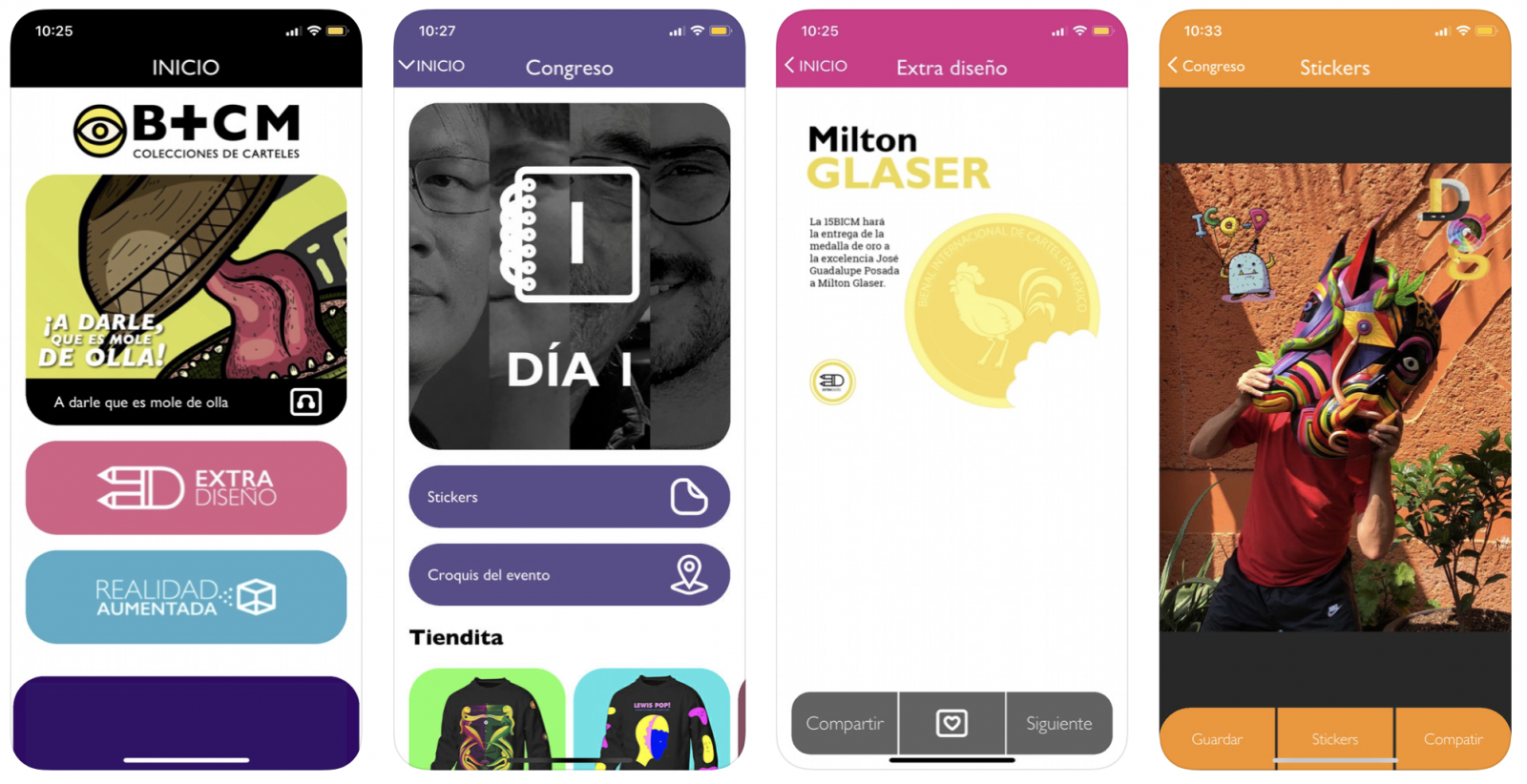
The Taiwan International Student Design Competition is based on design education. We hope that this design competition can serve as a communication platform for cutting-edge designers and a stage for showcasing design energy. There is always more than one way to interpret something. Perhaps many design industry insiders think that a design competition is a speculative pipeline. But this is not the case for the non-profit Taiwan International Student Design Competition. Our operations are grounded in design education and the aspirations of Taiwan’s aspiring designers. We hope that the Taiwan International Student Design Competition can achieve international influence while providing designers with a platform of increased visibility for showcasing their works so as to increase the confidence in and commercialization of the products shown at the competition. This is not a one-time competition. This is a competition full of life and vigor.
參考資料Reference:
洪偉肯、黃天祐(2013)。設計為科技加值的途徑-以Dechnology專案為例。設計學報18(1),41-64。
陳彥廷(2016)。設計獎道理。臺北,桑格文化有限公司。
鍾伊婷(2011)。設計競賽對於學生學習之影響研究。國立成功大學工業設計學系碩士論文,臺南。
Don Norman (2010). Why Design Contests Are Bad. Core77 Columns. 參考自:https://www.core77.com/posts/17024/why-design-contests-are-bad-17024
Self,J. A., (2014). Mind the gap: Perceptions of design awards from the wild.International Journal of Design, 8(3), 123-138.
Temple,P., & Swann, P. (1995). Competitions and competitiveness: The case ofBritish design awards. Business Strategy Review, 6(2), 41-52.